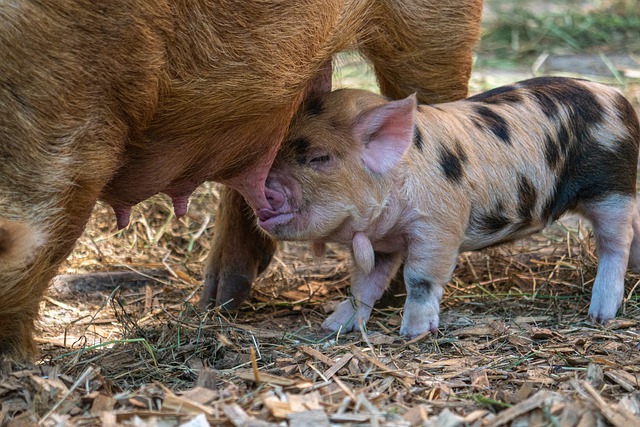
Mammals usually feed on the milk secreted by their mother.
Mammals ( Mammalia ) are warm-blooded vertebrate animals that are classified into large groups such as viviparous animals, platypuses , and echidnas . In most mammals, fetuses develop in the mother's womb and, once they are delivered, they feed on the milk that their mother produces for them and stores in their breasts ; However, there are exceptions, in the last two groups mentioned the babies are fertilized in an egg and once they are born they feed on small larvae and seeds that their mothers collect for them. It is important to mention that mammals belong to a monophyletic taxon , meaning that all species share the same ancestor.
There are more than 5,410 species of mammals, which shows the great diversity of this type of animal. The largest mammal, the blue whale , can weigh about 160 tons; Kitti's hognose bat , on the other hand, is the smallest mammal, weighing only two grams. Human beings, on the other hand, are also mammals.
The variety of mammals means that they can be present in environments as diverse as the desert, jungle, tropical jungles and polar ice, for example.
Particularities of mammals
All mammals descend from a species known as primitive synapsids , which belonged to the group of amniote tetrapods that inhabited the planet around 280 million years ago and that came to replace the predominance of reptiles and remained the majority until the beginning of the Period Triassic ; At this time, dinosaurs emerged who, due to their stronger qualities, banished the synapsids from the throne. The few that survived (the multituberculates and the australosphenids) became the first mammals of the Middle Jurassic.
It is at this point possibly where it is easiest to establish the classification of a species within this group; Since despite the differences in the evolutionary development of each particular species , there are certain exclusive novelties known as synapomorphies that are only reflected in animals belonging to this group; These are certain anatomical and physiological characteristics. They are:
* A single dental bone that differs in each species according to the type of diet and that is contained in a jaw;
* A jaw articulated with the skull that allows them to feed using the dentary without it detaching from the head;
* An auditory system formed by three bones in the middle ear (malleus, incus and stapes), a characteristic possessed by all mammals except monotremes, which have a reptilian ear;
* Hair on the entire body throughout all stages of life and a bone chain;
* Mammary glands that allow them to secrete milk to feed their offspring in the first stage of growth.
On the other hand, the sex of the mammal is determined from the existence of two chromosomes at the time the zygote is formed. These chromosomes are known as X and Y.

Dogs and cats are mammals.
central nervous system
Furthermore, it is necessary to point out that most mammals have a central nervous system that allows them to perceive the world and respond to external stimuli by processing information abstractly.
It is thanks to this nervous system that they perceive pain in a certain part of the body and that, according to their experiences, they can predict or anticipate certain dangers that they know will negatively affect them.
